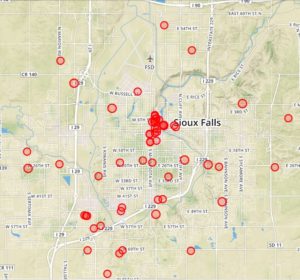 A Geofence campaign can maximize your budget when it comes to targeting a specific audience. But this doesn’t mean that it’s right for everyone. There are certain guidelines that should be followed when considering Geofencing as an option for your business.
A Geofence campaign can maximize your budget when it comes to targeting a specific audience. But this doesn’t mean that it’s right for everyone. There are certain guidelines that should be followed when considering Geofencing as an option for your business.
What is Geofencing?
Geofencing uses GPS to build a virtual boundary area around specific locations, called fences. Once a customer enters the parameters of the targeted area, a Real-Time Bidding process occurs and a display ad is served through apps on mobile devices to individuals who meet the selected target audience.
Getting Started with Geofencing
When you’re in the planning stage of your campaign, it’s important to find the answers to some questions in order to discover if Geofencing is a good option for you.
- Is this a high traffic area?
- Are there multiple locations that we can target?
- Is this a static business that we’re targeting?
- How long can you target the locations?
In the rest of this article, we’ll break down each of these questions and help you decide in a Geofence campaign is right for you.
 Is this a high traffic area?
Is this a high traffic area?
There are many qualifiers that can make a Geofence campaign successful. One of these qualifiers is targeting high traffic areas. Targeting areas with a large amount of foot traffic will increase the likelihood that your ad will be seen.
What exactly is a “high traffic area?” This usually means there will be approximately 15,000 to 200,000 people visiting the targeted area over the campaign’s flight date range. This makes for a good campaign because it gives us the opportunity to spread out the ads among the people who will be at the event. This also helps by limiting the amount of times one person is served your ads.
Are there multiple locations that we can target?
Another good example of a qualifier that would make a good Geofence campaign is a strategy that targets multiple locations. This would be a good strategy to use if you wanted to reach multiple businesses in a specific area.
For example, if you operated a gym and wanted to run a conquest campaign and reach the customers of your competitors. If your competitor has multiple gym locations, you can target each location and expose their customers to your advertisements as they’re working out.
Is this a static business that we’re targeting?

The third quality that would make a good Geofence campaign would be targeting locations that are “static.” A static location is any location that always has your target audience flowing in and out of the business.
An example of a static business would be if you wanted to target advertising agencies in order to reach the business decision makers in that building. They will be in that business location five days a week, so a Geofence campaign would be a beneficial tool to reach them.
As you can see from the example, a campaign can include many different locations. Each of the circles has been identified as a high trafficked location.
How long can you target the locations?
The last question that you should ask when considering a Geofence campaign would be to find out if you’re willing to target the businesses for an extended period of time. One of the factors that we consider when determining if we should try a Geofence campaign is if we can target the locations for 1-3 months.
Targeting a location for an extended period of time not only helps expose your ad to more people, but also gives us time to optimize the campaign to deliver the best results. Based on the day-to-day performance of the campaign, our team of digital specialists is able to make adjustments to guarantee that you’re spending your budget on your target audience.
Is a Geofence Campaign right for you?
There are a lot of factors that you should consider when you decide to use Geofencing as an effective tool for your business. The data that we’ve put together shows that campaigns that exhibit at least two of the four qualities above perform the best towards our client’s goals.
If you have an event or business in mind that has high traffic, static locations, and can be targeted for long flight dates, download our Geofencing whitepaper and learn more about the capabilities Geofencing can provide for you.
[space]